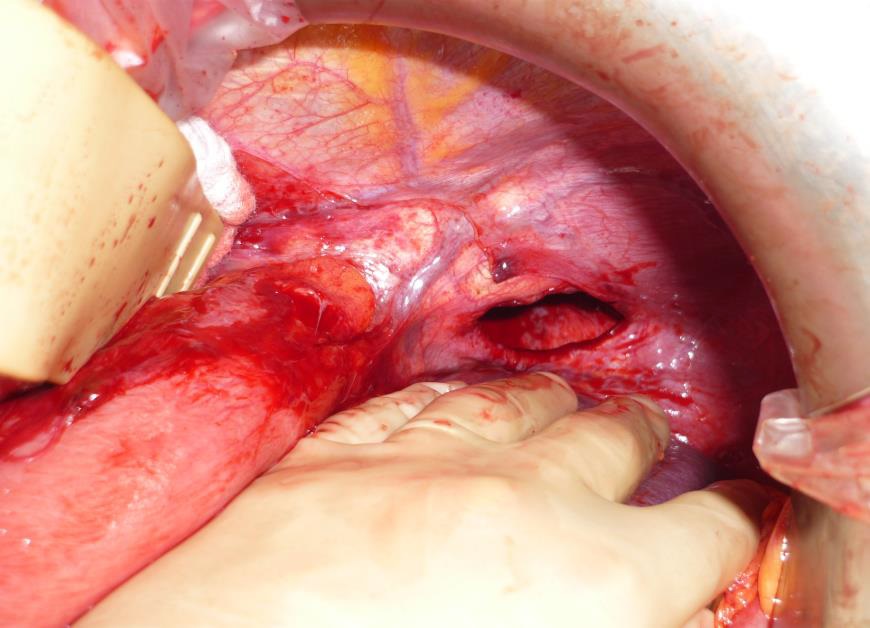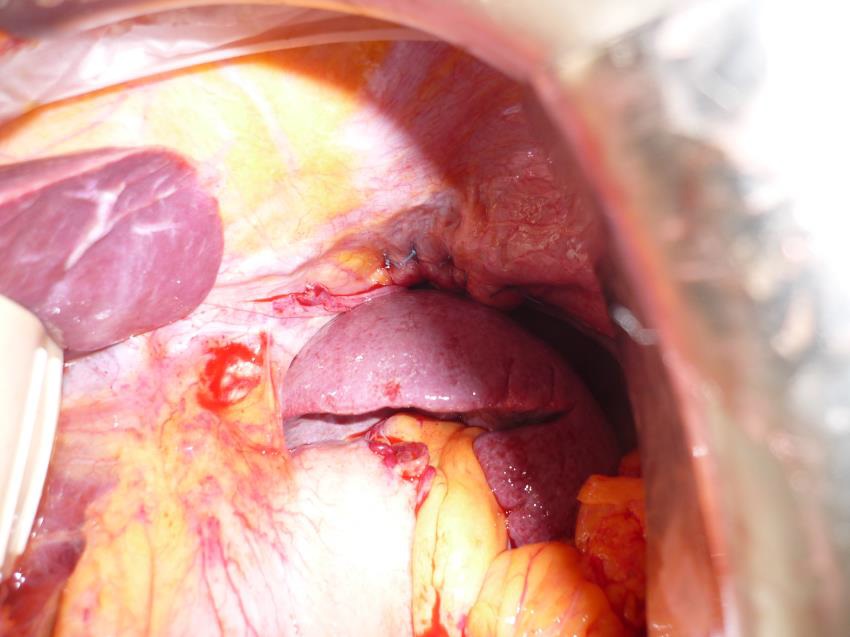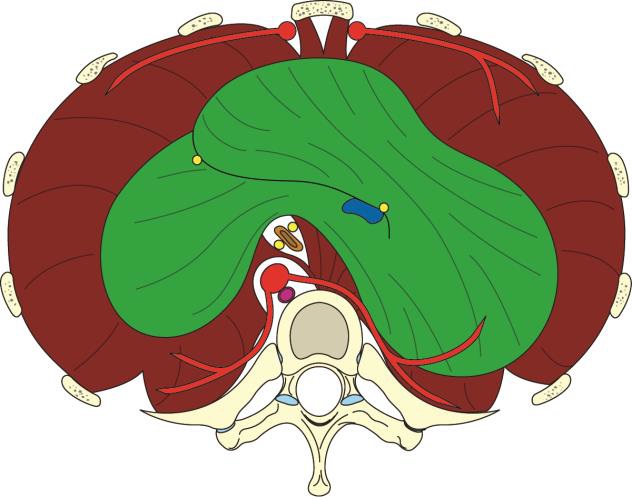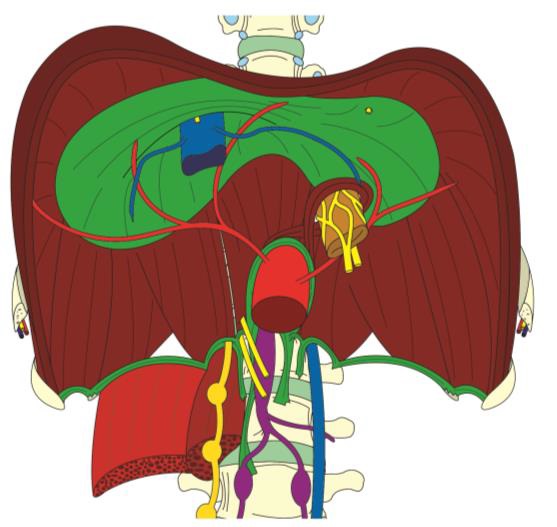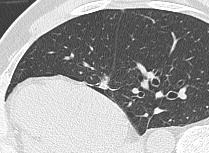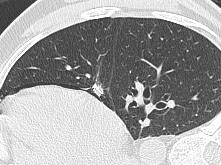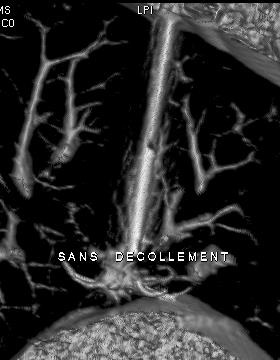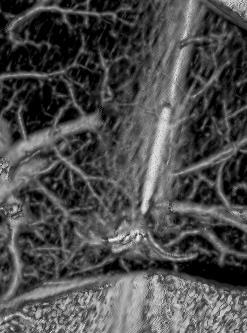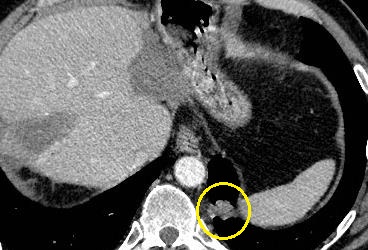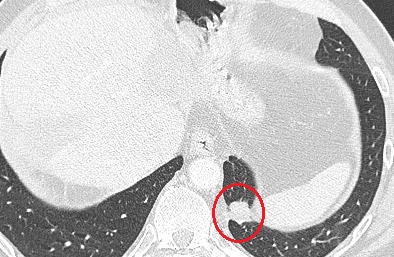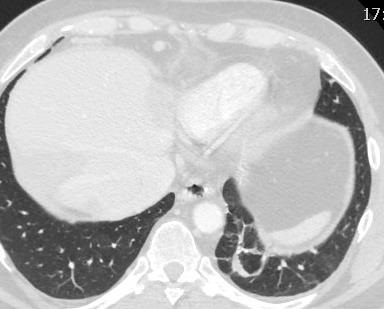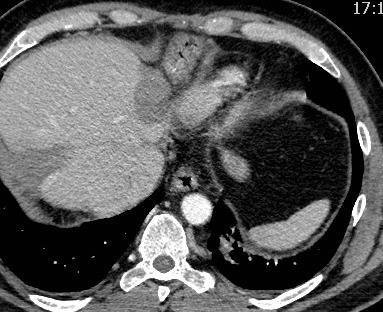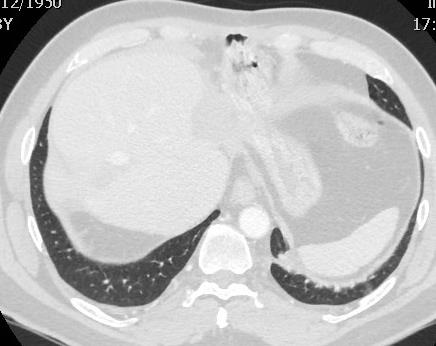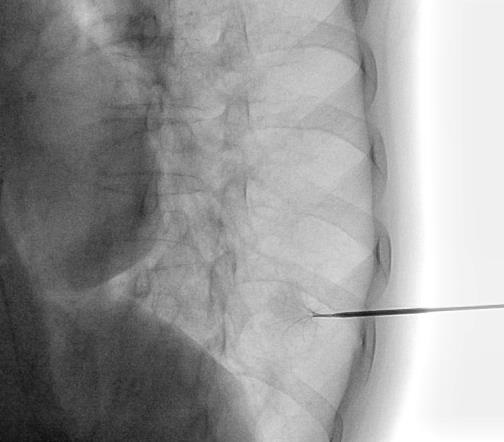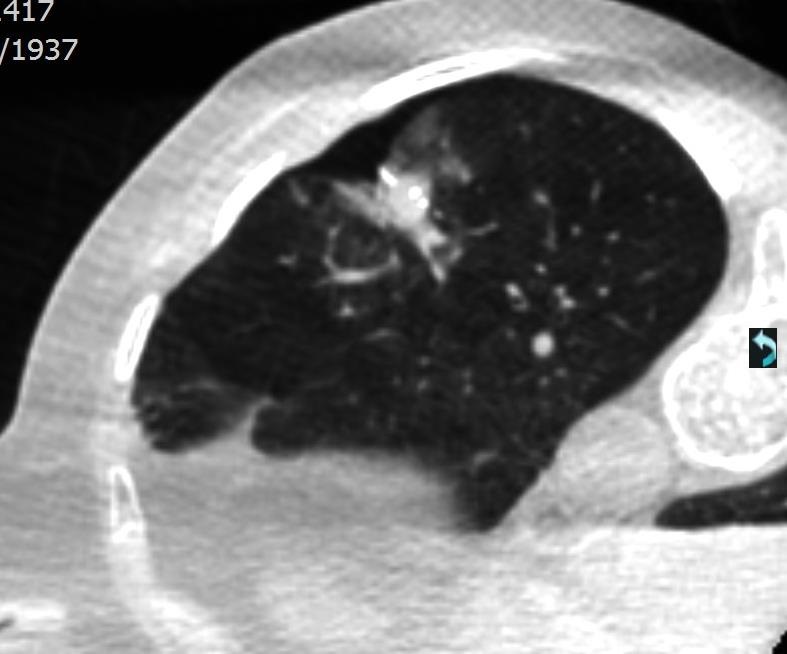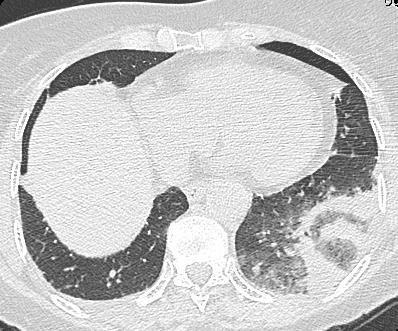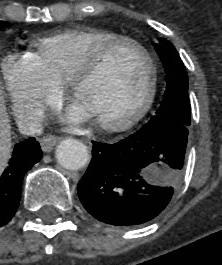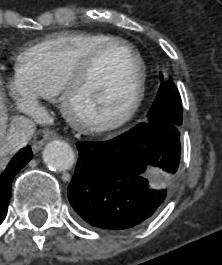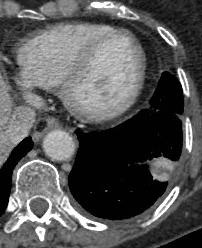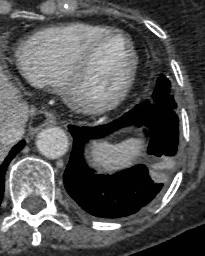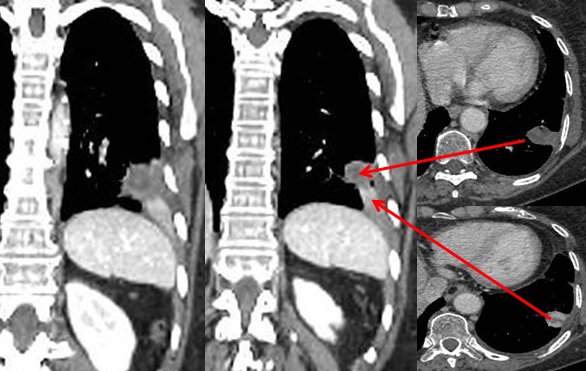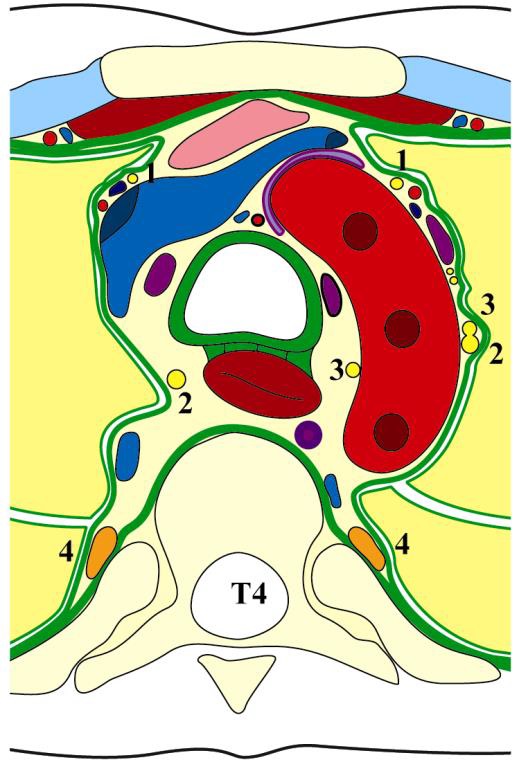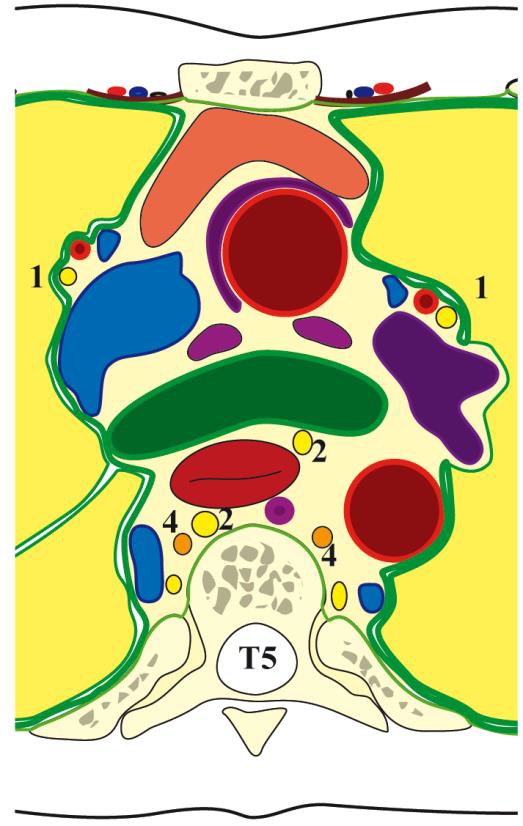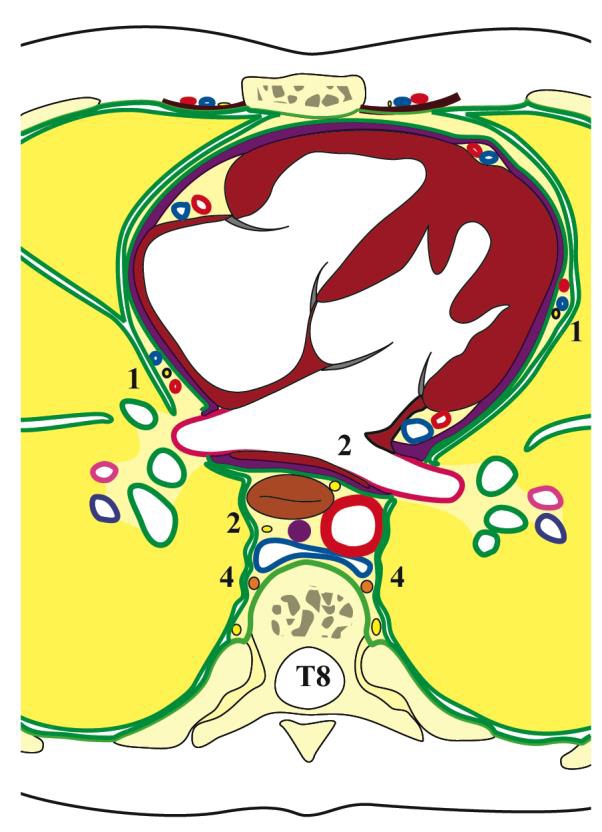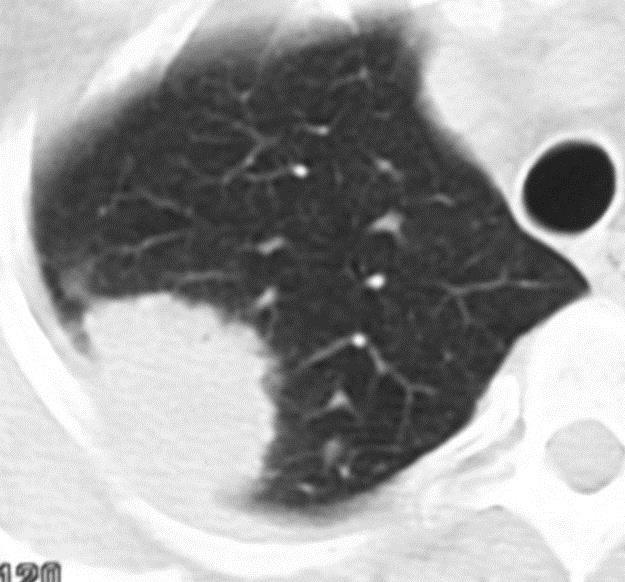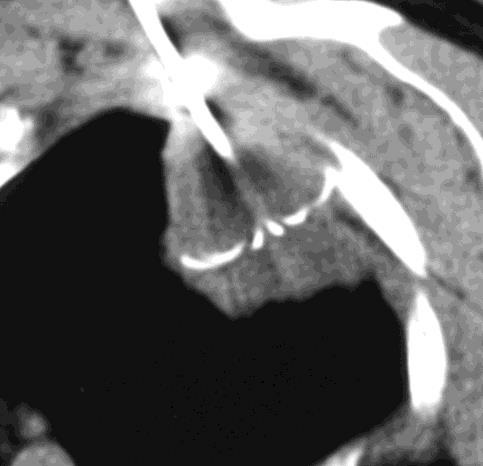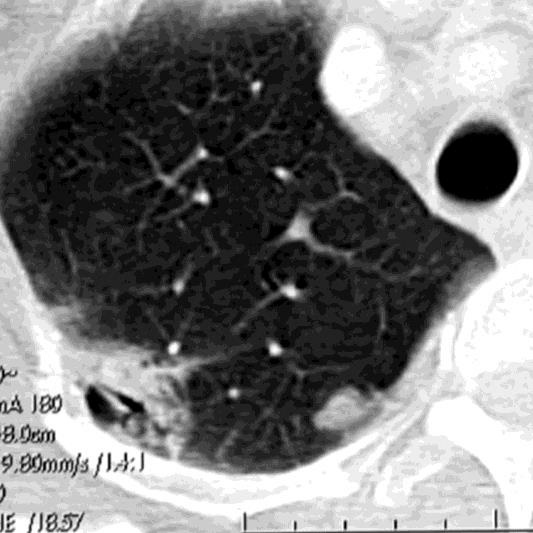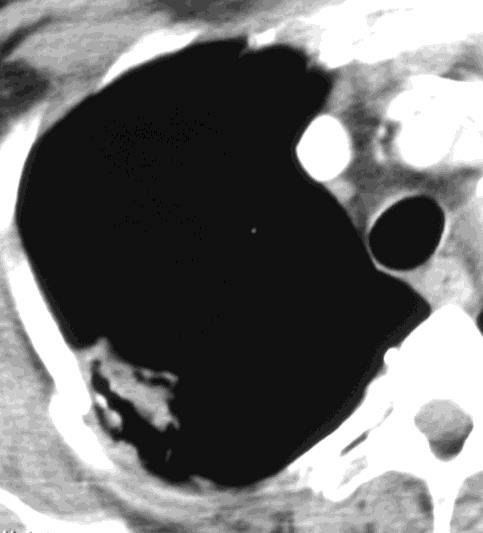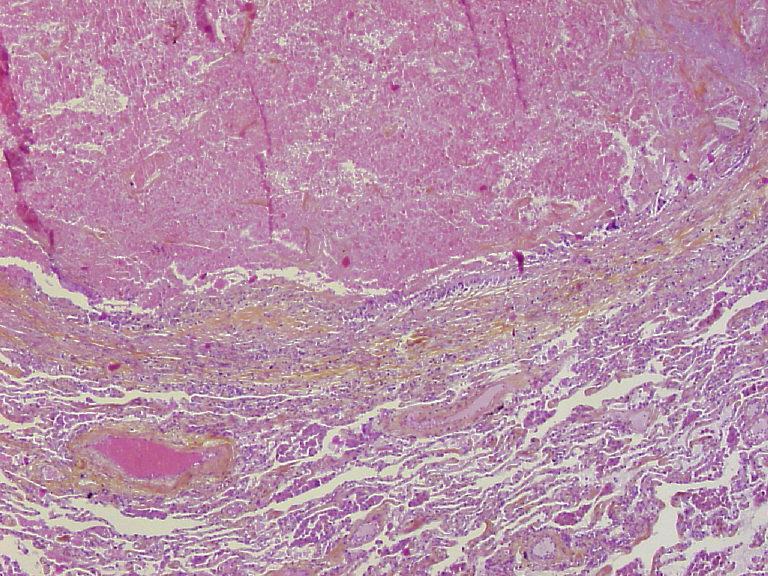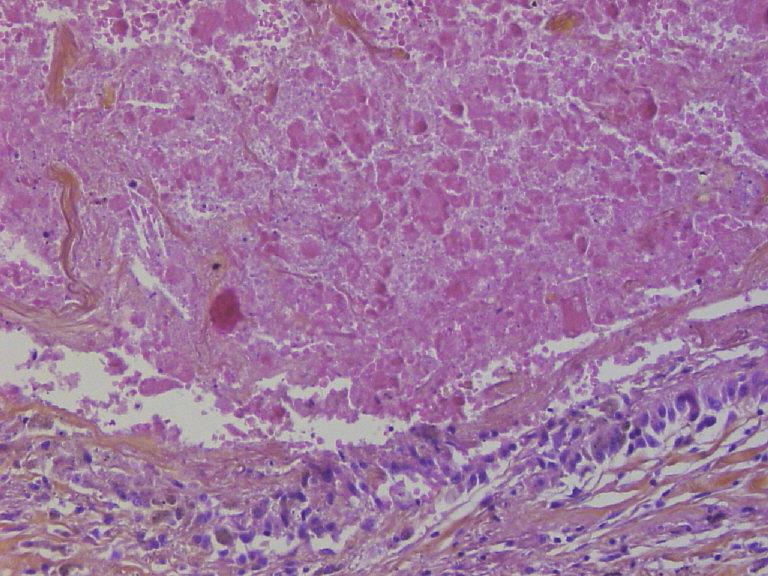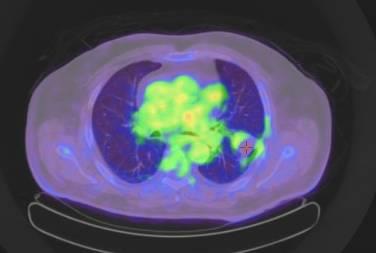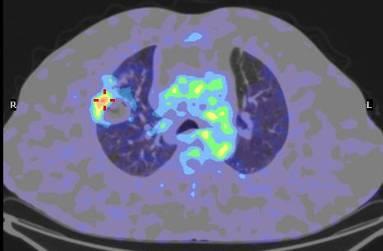膈疝发生率罕见<3%。 危险因素包括,电极穿透膈肌,接触膈肌中心部分【1】;减少危险因素包括人工气胸,CO2或球囊间位置入【2】或人工腹水【3】。是否应用冷冻方式可以更多的保留膈肌组织的胶原或纤维结构尚不得而知,需试了才知道。 危险因素
Vicinity of the heart or aorta. Is it a CI? 安全吗?
认为在心脏和主动脉附近的病变射频消融的文献有两篇【4,5】。
«Radiofrequency ablation of lung tumors close to the heart or aorta was safely performed ».【4】
« Pulmonary radiofrequency ablation next to the heart is a relatively safe procedure. Major concern is that incomplete tumor ablation adjacent to the heart is probable as a result of the cooling effect of the circulating blood »【5】
3个月之后
C臂CT引导下肺射频消融 引导技术除了CT引导,C臂CT也可用于射频消融的引导 76岁女性,结肠癌肺转移,CBCT引导下多极针射频消融治疗
6月之后,你怎么想?
中心密度低与冠扫低密度针道相一致。
肺下肺病变有时颇具挑战性
Main nervous structures of the thorax potentially injured after lung ablation
1: 膈神经 PHRENIC NERVE
2: 迷走神经 VAGUS NERVE
3:左喉返神经 LEFT RECURRENT NERVE
4: 交感神经 SYMPATHETIC TRUNK
感染反应可以持续很长时间:肺消融病变的挑战
Inflammatory reaction may persist over a long period PET/CT
1. Alberti N,et al . Diaphragmatic Hernia After Lung Percutaneous Radiofrequency Ablation: Incidence and Risk Factors. Cardiovasc Intervent Radiol. 2014 Feb 12 2. Knuttinen MG, et al. Unintended thermal injuries from RFA: organ protection with an angioplasty balloon catheter in an animal model. J Clin Imaging Sci. 2014 Jan 30;4:1. 3. Kim YS, et al RFA of the liver in a rabbit model: creation of artificial ascites to minimize collateral thermal injury to the diaphragm and Stomach. JVIR. 2006 Mar;17(3):541-7 4. Iguchi T, Hiraki T, Gobara H, Mimura H, Fujiwara H, Tajiri N, Sakurai J, Yasui K, Date H, Kanazawa S. Percutaneous radiofrequency ablation of lung tumors close to the heart or aorta: evaluation of safety and effectiveness. J Vasc Interv Radiol. 2007 Jun;18(6):733-40. 5. Steinke K1, Arnold C, Wulf S, Morris DL. Safety of radiofrequency ablation of myocardium and lung adjacent to the heart: an animal study. J Surg Res. 2003 Oct;114(2):140-5. 6. Bonichon F et al Diagnostic accuracy of (18)F-FDG PET/CT for assessing response to radiofrequency ablation treatment in lung metastases: a multicentre prospective study. Eur J Nucl Med Mol Imaging. 2013 Sep 17 |


